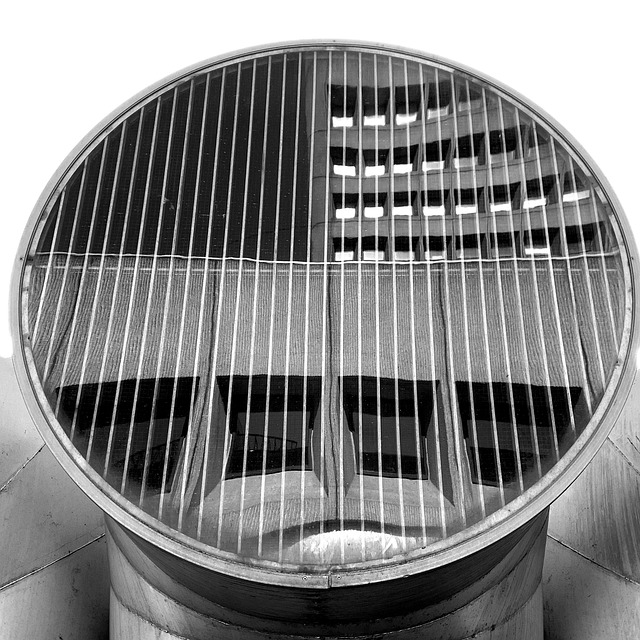Steel structure drafting is a critical process in construction planning, creating detailed 2D and 3D drawings for frameworks using standard symbols to represent structural components. Professionals use computer-aided design (CAD) software for complex framing layouts, visual clarity, and modifications. Essential for residential, commercial, and industrial projects, it ensures accuracy, adaptability, and regulatory compliance, transforming designs into robust structures that withstand extreme conditions.
“Unleash the power of precise structural design with a deep dive into 2D and 3D steel structure drafting for diverse projects. From cozy residential abodes to towering commercial skyscrapers and industrial behemoths, understanding these drafting basics is paramount. This comprehensive guide explores the fundamentals, delving into specific considerations for each project type. Whether you’re an architect or engineer, mastering steel structure drafting enhances your ability to bring visions to life, ensuring structural integrity and aesthetic appeal.”
Understanding Steel Structure Drafting Basics
Steel structure drafting is a critical aspect of designing and planning for any construction project, be it residential, commercial, or industrial. It involves creating precise 2D and 3D drawings that outline the framework and components of a steel structure. These detailed blueprints are essential tools for communication between architects, engineers, contractors, and fabricators, ensuring everyone involved understands the structural vision.
The basics of steel structure drafting include learning to represent various elements like beams, columns, connections, and brackets using standard symbols and notation. Drafters must possess knowledge of different steel grades, section properties, and loading conditions to accurately depict the final structure. With computer-aided design (CAD) software becoming the industry standard, professionals can now create complex steel framing layouts, enhance visual clarity, and easily modify designs as needed.
Residential Projects: Plans & Elevations
In residential projects, 2D and 3D structural drawings play a pivotal role in transforming architectural designs into tangible structures. Steel structure drafting is a key aspect here, as it meticulously maps out the layout and dimensions of each component, from floor plans to elevation views. These drawings provide a clear understanding of spatial relationships, ensuring that every element—be it bearing walls, roof trusses, or structural supports—is accurately positioned and dimensioned.
For instance, residential plans typically include detailed floor plans showing wall placements, room layouts, and furniture arrangements. Elevations, on the other hand, offer a vertical perspective, illustrating the building’s aesthetic features such as window and door positions, as well as exterior cladding materials. This comprehensive approach facilitates efficient construction, enabling builders to visualize and execute the project with precision and adherence to design intent.
Commercial Spaces: Design & Layout Considerations
Commercial spaces, with their diverse functions and high-traffic areas, demand thoughtful design and layout considerations. When it comes to structural drawings for commercial projects, accuracy and adaptability are key. Steel structure drafting plays a pivotal role here, offering unparalleled precision and flexibility. Drafters can create detailed plans for complex layouts, ensuring every column, beam, and joint is precisely positioned to support the intended load.
In designing commercial spaces, access routes, customer flow, and functionality must be optimized. Structural drawings account for these factors by illustrating clear paths for people and goods movement, while also considering regulatory compliance. The dynamic nature of commercial environments necessitates robust and adaptable designs, making steel structure drafting an indispensable tool in bringing these functional spaces to life.
Industrial Applications: Complex Drafting Techniques
In the realm of industrial projects, complex drafting techniques play a pivotal role in translating designs into tangible structures. Steel structure drafting, for instance, involves meticulous precision to create robust and efficient frameworks often seen in factories, warehouses, and heavy-duty construction sites. These drawings not only outline the dimensions and specifications of steel components but also account for structural integrity, weight distribution, and safety standards, ensuring the final product stands strong under demanding conditions.
Advanced drafting software and engineering principles enable draftspersons to handle intricate details such as connections, welding points, and load-bearing capacities. This level of complexity is particularly vital in industrial settings where structures must withstand extreme forces, frequent usage, and often, harsh environmental conditions. As a result, precise steel structure drafting becomes a game-changer, fostering the development of durable, functional, and safe working environments.
In conclusion, mastering 2D and 3D structural drawings through steel structure drafting is a pivotal skill for architects and engineers across various industries. From residential homes to sprawling industrial complexes, precise drafting ensures structural integrity and efficient design. As the demand for complex buildings continues to grow, understanding these techniques becomes essential for navigating the dynamic landscape of modern construction.
